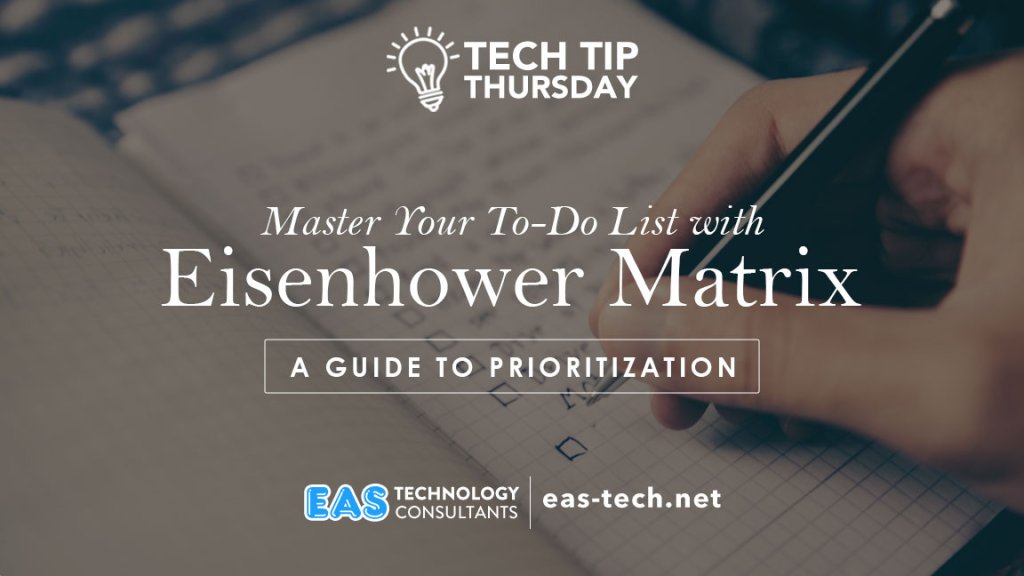
In today’s fast-paced world, managing a to-do list can be a daunting task. With numerous tasks and responsibilities constantly vying for our attention, it’s crucial to have an effective strategy for prioritizing tasks. One such strategy that has gained popularity over the years is the Eisenhower Matrix. This powerful tool, developed by former U.S. President Dwight D. Eisenhower, helps individuals distinguish between urgent and important tasks and prioritize them accordingly. In this article, we’ll explore the Eisenhower Matrix and provide four practical tips for managing your to-do list effectively.
Understanding the Eisenhower Matrix

The Eisenhower Matrix, often called the Urgent-Important Matrix, is a simple but highly effective framework for task management. It categorizes tasks into four quadrants, each with its own level of urgency and importance:
- Quadrant I: Urgent and Important
- Tasks in this quadrant demand immediate attention and should be dealt with promptly. They are typically crisis situations, deadlines, and critical issues that can’t be ignored.
- Quadrant II: Important but Not Urgent
- Tasks in this quadrant are crucial but do not require immediate action. They include activities such as planning, strategizing, personal development, and long-term goals.
- Quadrant III: Urgent but Not Important
- Tasks in this quadrant are often distractions or interruptions that, while urgent, don’t contribute significantly to your long-term goals or priorities. Delegating or minimizing these tasks is key.
- Quadrant IV: Not Urgent and Not Important
- Tasks in this quadrant are neither urgent nor important and can be considered time-wasters. Minimizing or eliminating these tasks from your schedule can free up valuable time and energy.
Distinguishing Between Urgent and Important
Before you can effectively use the Eisenhower Matrix, it’s crucial to understand the difference between tasks that are urgent and tasks that are important:
- Urgent tasks are time-sensitive, often with impending deadlines or immediate consequences if not addressed. They demand immediate action.
- Important tasks are those that have long-term significance, contributing to your goals, values, and overall well-being. They may not be time-sensitive but are fundamental to your success and happiness.
Four Tips for Prioritizing Tasks Using the Eisenhower Matrix
- Start with Quadrant II: Focusing on the Important
- The key to effective time management and personal growth is to spend the majority of your time in Quadrant II. These are tasks that are important but not urgent. By allocating time for planning, self-improvement, and strategic thinking, you’ll reduce the number of tasks that become urgent in the future.
- Tackle Quadrant I Promptly: Urgent and Important
- Quadrant I tasks should not be ignored. These are crises and situations that require your immediate attention. The key here is to prevent as many tasks as possible from falling into Quadrant I by proactively addressing important tasks in Quadrant II.
- Delegate or Eliminate Quadrant III: Urgent but Not Important
- It’s essential to recognize that not all urgent tasks are essential. Evaluate tasks in Quadrant III and consider delegating them to others or finding ways to minimize their impact. This will free up time for important activities in Quadrant II.
- Avoid Quadrant IV: Not Urgent and Not Important
- Quadrant IV is the realm of distractions and time-wasters. These tasks should be minimized or eliminated altogether from your schedule. The more time and energy you can reclaim from Quadrant IV, the more productive and focused you’ll become.
The Eisenhower Matrix is a valuable tool for managing your to-do list and prioritizing tasks effectively. By distinguishing between urgent and important tasks and using the four tips outlined in this article, you can regain control over your time, reduce stress, and make significant progress toward your long-term goals. Remember, the key to success is not just being busy but being busy with purpose and intention.
